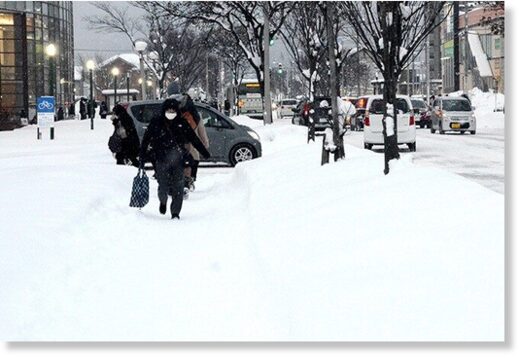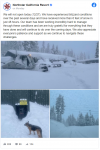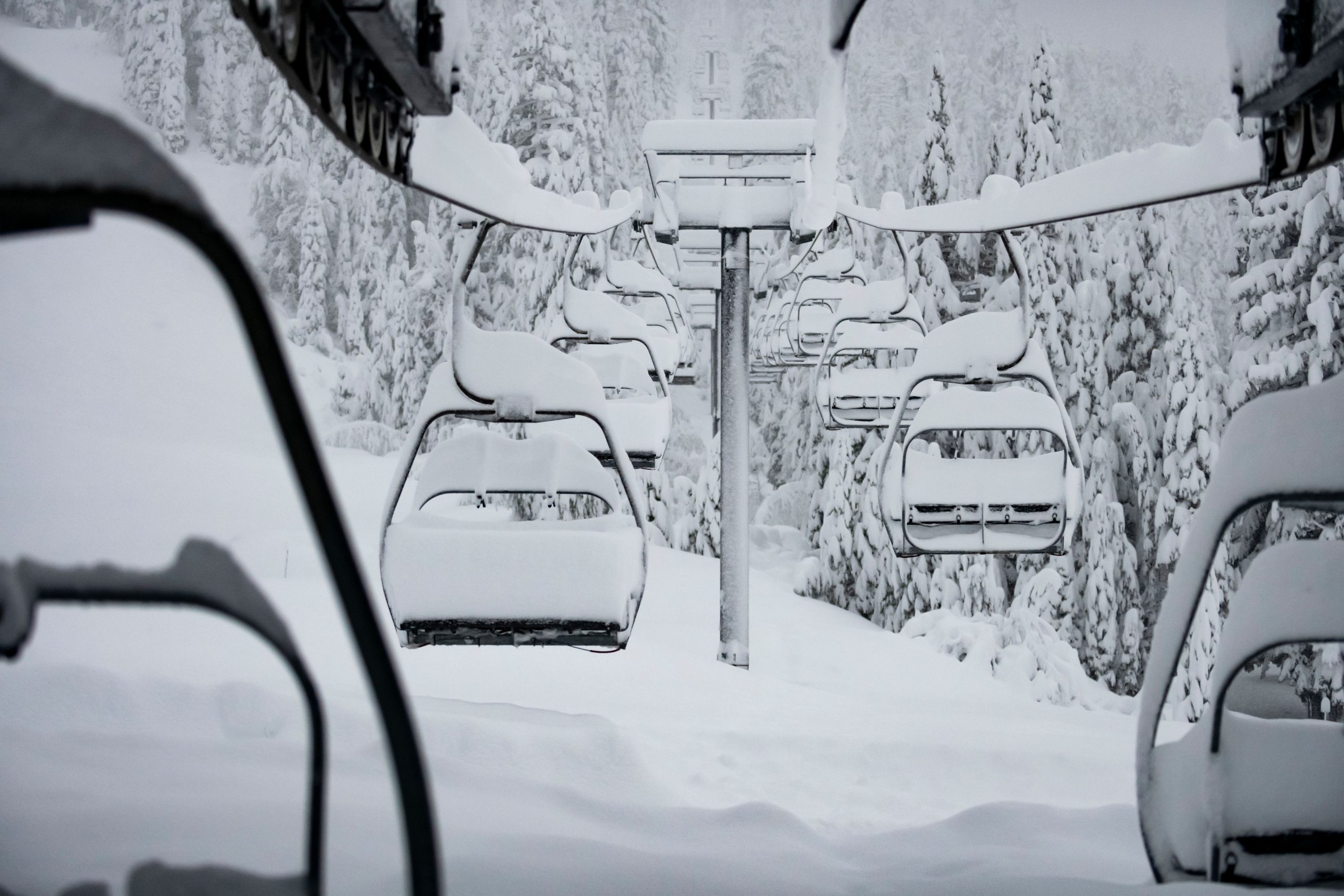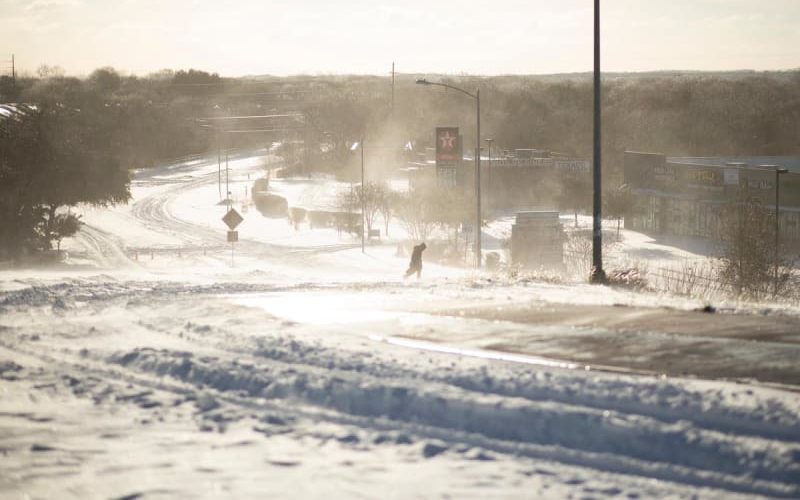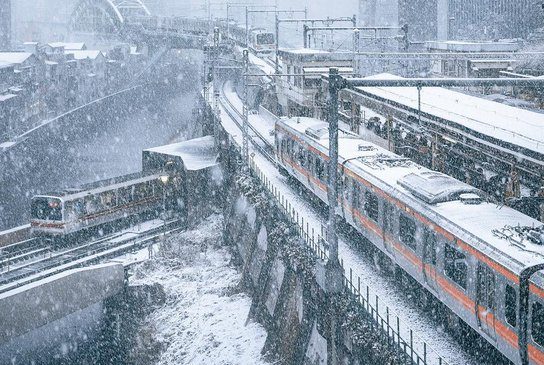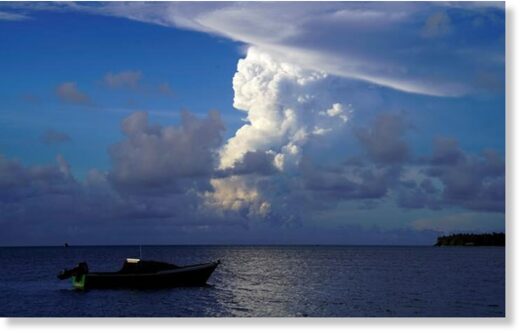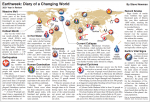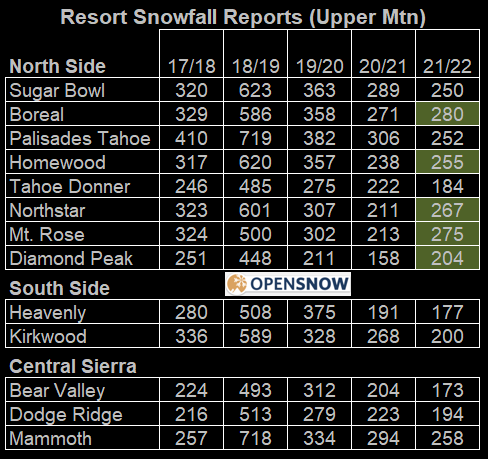Hulunbuir, China Suffers Coldest Day Ever (-54.4F); Seoul Registers Lowest Temp Since 1980; Big Blizzards Batter Russia And Nepal; 13 Feet Of Snow Buries Towns In Turkey; + Vancouver Sees Coldest Temp Since 1969 - Electroverse
Extreme Weather GSM
HULUNBUIR, CHINA SUFFERS COLDEST DAY EVER (-54.4F); SEOUL REGISTERS LOWEST TEMP SINCE 1980; BIG BLIZZARDS BATTER RUSSIA AND NEPAL; 13 FEET OF SNOW BURIES TOWNS IN TURKEY; + VANCOUVER SEES COLDEST TEMP SINCE 1969
DECEMBER 30, 2021 CAP ALLON
HULUNBUIR, CHINA SUFFERS COLDEST DAY IN HISTORY (-54.4F)
Historic cold and snow has been buffeting eastern Asia in recent weeks, including the nations of China, Japan and South Korea–more on the latter below.
Following the host of Chinese locales breaking
all-time low temperature records this week (which include Tuli River’s
-42C (-43.6F); Fuyuan’s
-42.3C (-44.1F); Wuying’s
-43.3C (-45.9F); and Jiayan’s
-44.4C (-47.9F)), the city of
Hulunbuir has bested them all with its low of –
46.9C (-54.4F) — thought to be the city’s coldest temperature ever recorded.
Hulunbuir is located in northern China’s Inner Mongolia autonomous region, and although the area is used to the cold, such a fierce and
widespread chill –with much of northern China holding below -40C– has proved problematic for authorities.
As a result, major supermarkets have been instructed to increase supplies of certain necessities, and people have been urged to stay indoors, reports the South China Morning Post.
View: https://twitter.com/RedHinggan/status/1474969466002108417
Since Dec 23, some 70 percent of China has experienced freezing temperatures, bitter winds, and snow after a severe Siberian cold wave descended deep into the country, with many locales, far more than I’ve mentioned above, enduring their lowest temperatures on record.
A meteorologist based in Beijing told the Global Times that this cold wave is “very powerful” and that it is impacting the majority of China, bringing blizzards to some parts which, in combination with the cold, are disrupting the power supply.
“The extreme weather will influence the power and energy supply in southern areas since the snow will have negative effects on the grid and the transmission of electricity,” noted one energy expert,as reported by
manilatimes.net.
The cold of winter is set to invade even the wealthiest of nations: Prepare for rolling blackouts... Grand Solar Minimum.

electroverse.net
SEOUL REGISTERS LOWEST TEMP SINCE 1980
Much like China, over the past few days, South Korea has been hit by historic snowfall and record freezes as the accumulative effect of low solar activity accelerates the cooling of Earth’s lower atmosphere — the troposphere.
South Korea’s lowest lows have been felt in northern parts of the country, as you’d expect — Cheorwon, located in Gangwon Province, registered the country’s coldest temperature this week — the
-25.4C (-13.7F).
However, the biscuit was taken by Seoul — despite the well-documented Urban Heat Island effect, which has been found to skew metropolises and built-up areas to the
warm side, the nation’s capital still managed to log a legendary low of
-16C (3.2F) this week — the city’s coldest December temperature in 41 years, since 1980.
And with regards to the snow, Gangwon Province has notched as much as
56cm (22 inches) in recent days, while
17cm (6.7 inches) has been registered in what is considered the warmest part of South Korea, Jeju Island.
Transport disruptions and flight cancellations have arisen across all of East Asia, particularly in Japan where they’re measuring snow totals in the feet (7+ft in Sukayu):
As much as 7 feet has fallen in Japan, breaking all-time records in books dating back to 1893. Grand Solar Minimum.

electroverse.net
BIG BLIZZARDS BATTER RUSSIA…
Shifting attention east, and to the Republic of Bashkortostan, also called Bashkiria –a republic of Russia located between the Volga and the Ural Mountains in Eastern Europe– a “mad blizzard” has descended, causing traffic chaos.
As collated in the
Forces Of Nature video embedded below, footage shows multiple vehicles captured by the snow in Bashkiria, where a severe blizzard has left the region struggling to cope.
A number of rescue operations are underway, according to the regional department for emergency situations, including on a section of the M-5 highway which is clogged with buses, trucks and cars due to the inclement weather.
View: https://youtu.be/aH8pQV5WbrQ
Run time is 2:41
The story is a similar one in the far northeast of Russia, in the city Murmansk, near Finland, as this video from
Is it close ? shows:
View: https://youtu.be/lezLlr-n1n0
Run time is 1:51
…AND NEPAL
Headed back to the southeast, heavy snowfall and sub-zero cold has swept the landlocked South Asian country of Nepal.
A recent report from Phungling in Taplejung stated that heavy snowfall (2+feet) in recent days, particularly at elevations of 3,400 metes (11,000 feet), has led to disruptions to “normal life” and a sharp drop in the mercury.
One local, Pema Sherpa, said that people have not been able to go outdoors due to the snowfall, and that children and the elderly people have been affected the most due to the freezing cold.
View: https://youtu.be/AoBbCDGDGkE
Run time is 0:20
13 FEET OF SNOW BURIES PARTS OF TURKEY
Turkey has been battered by intense snowfall and extreme frosts this month. Benchmarks have been falling, and people have been dying in the anomalous cold.
Particularly in eastern Turkey, and at elevations above 1,500 meters (4,900 feet), historic snowfall has managed to quite literally bury a number of locales, most notably in Muş province where persistent heavy snowfall has seen accumulations climb to more than
4 meters (13+ feet), according to
local media reports.


Adem Toprak, a worker who has been involved in snow-clearing operations, told Reuters he had a hard time believing the scale of the snow depth at first, and how the accumulation could be in meters.
“We live in the city center. They said that the snow depth was around four meters here, but we didn’t believe that. We came and saw that
the snow depth here exceeded four meters,” he said.
Despite reopening roads, they would soon be blocked again because of the heavy snowfall, according to local officials.
“Since the first day of snowfall, we had to reopen the roads of approximately 185 villages in our city
twice,” said Seyhmus Yentur, secretary-general of Mus Special Provincial Administration. “Our fight against snow continues uninterruptedly for 24 hours with 59 construction machineries and 90 personnel,” he added.
The
cold has also been noteworthy.
Low temperatures in the valleys have been approaching
-40C (-40F), which is astonishing given that the records for these regions rarely descend below -30C (-22F).
Göle, for example, aptly known as
‘The Siberia of Turkey’, is currently an ice box: “We are frozen, even the water in our homes is frozen,” said local man Aleaddin Kılıç, who noted the mercury had been regularly dipping to
-30C (-22F) overnight, freezing fountains, and coating trees in a thick white frost.
Eastern Turkey has become somewhat accustomed to anomalous cold and snow this month.
As have parts of the West, as the below footage (from Dec 22), shot in Istanbul, reveals:
View: https://twitter.com/CaptainGhazi/status/1473609234403241987
Run time is 1:55
VANCOUVER SEES COLDEST TEMP SINCE 1969
After Canada’s first sub -50C in December since 1998, the polar cold has persisted and spread.
Vancouverites can usually count on relatively mild winter conditions, at least compared to typical Canadian chill — but not this month: According to
The Weather Network, Vancouver, B.C. reached a low
-15.3C (4.5F) on Dec 27, which they described as “a radical departure from seasonal norms,” and the coldest temperature that Vancouver has seen in the past 52 years, since 1969:

The freezing weather can be credited to an Arctic outflow “funneling bitterly cold air down into southern B.C., which is then prevented from escaping”.
The fierce chill paired with Vancouver’s
unusually snowy Christmas has made this a
unique weather month, continues the article. But the uniqueness hasn’t just been confined to Vancouver; all of Western Canada has been holding exceptionally cold (and snowy) of late:
As much as 7 feet has fallen in Japan, breaking all-time records in books dating back to 1893. Grand Solar Minimum.

electroverse.net
As has the Western U.S.:
Northern Hemisphere Total Snow Mass accelerates to 350 Gigatons above the 1982-2012 average. Grand Solar Minimum

electroverse.net
And this extreme cold will continue dominating into the New Year, when it will then start spreading eastwards:

GFS 2m Temp Anomalies (C) Jan 1 – Jan 4 [
tropicaltidbits.com].
The
COLD TIMES are returning, the mid-latitudes are
REFREEZING in line with
historically low solar activity,
cloud-nucleating Cosmic Rays, and a
meridional jet stream flow (among many other forcings, including the impending release of
the Beaufort Gyre).
According to the 15x NASA satellites that measure every square inch of the lower troposphere, Earth's temperature was warmer back in 1987.

electroverse.net
Prepare accordingly — learn the facts, relocate if need be and
grow your own.

